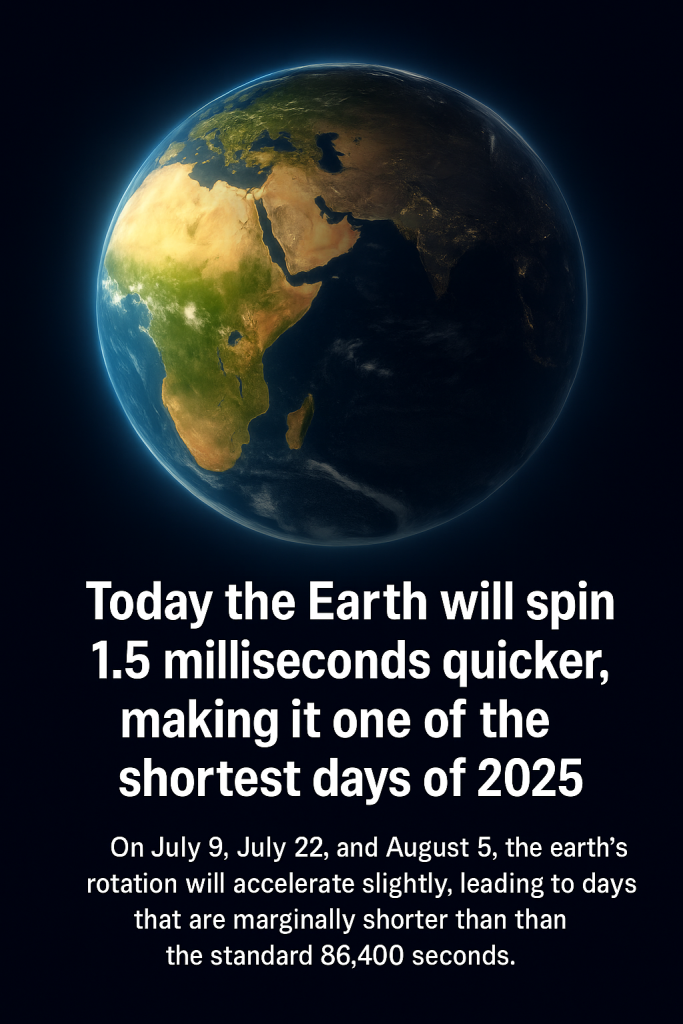This year, our planet is pulling a surprising trick — it is spinning faster than usual, resulting in some of the shortest days ever recorded. Scientists warn that on particular days in 2025, the Earth will rotate so quickly that days will be up to 1.5 milliseconds shorter than the standard 24-hour period.
These subtle shifts might seem insignificant to our daily lives, but they are sending ripples through the world of precise timekeeping. The Earth’s unexpected acceleration in rotation is significant enough that it could prompt the first-ever negative leap second, a rare adjustment to atomic clocks that has never been implemented before.
What’s causing Earth to spin faster? Experts point to a complex interplay of factors. One major influence is gravity, particularly the tug of the Moon and the Sun on Earth’s molten core and surface, which affect the planet’s rotational speed. Seasonal changes also play a role: as ice melts and redistributes water, mass moves closer to the Earth’s axis, effectively acting like a figure skater pulling their arms in to spin faster.
There is growing speculation that climate-related changes might be contributing as well. Melting polar ice caps and fluctuating ocean currents alter the distribution of Earth’s mass and can speed up rotation subtly but measurably. While these changes are too small to disrupt our perception of time, they are causing a headache for scientists relying on ultra-precise atomic clocks to keep time synchronized worldwide.
Atomic clocks provide the backbone for everything from GPS navigation to telecommunications networks, expecting the day to last precisely 86,400 seconds. When Earth’s rotation gets out of sync, international timekeepers introduce leap seconds — one-second adjustments added or subtracted to keep clocks aligned with Earth’s actual position relative to the sun.
Since their inception in 1972, leap seconds have only ever been positive, meaning an extra second is added to the day to slow timekeeping down to Earth’s pace. But this year, with the planet spinning faster, scientists may face a negative leap second — effectively removing a second from the clock — to keep atomic time in harmony with our planet’s new rhythm.
Specific dates spotlight this phenomenon: July 9, July 22, and August 5, 2025, are forecasted to be among the shortest days, with Earth’s rotation accelerating noticeably. On these days, the Earth will spin up to 1.5 milliseconds faster than average, quietly shaving precious milliseconds off each day’s length.
Why does this matter? While humans won’t feel these micro-changes in their everyday experience, the challenge lies in the precision required by modern technologies. GPS satellites, stock market timestamps, international communication systems, and scientific experiments depend on ultra-accurate timing. Even milliseconds matter.
Therefore, timekeeping organizations are vigilantly monitoring the situation and preparing protocols to implement a negative leap second if necessary — a procedure that could present unique challenges because systems worldwide have never had to subtract time before.
Ultimately, the Earth’s subtle nudge forward in its spin reminds us of the dynamic relationship between our planet’s physical processes and the precise methods humans use to mark time. As climate shifts unfold and the cosmos influences Earth’s dance, expect scientists to continue refining how we keep track of every fleeting second.
So no, time itself is not speeding up — but Earth is giving it a gentle, millisecond-scale push, keeping humanity on its toes in the quest for perfect timing.



